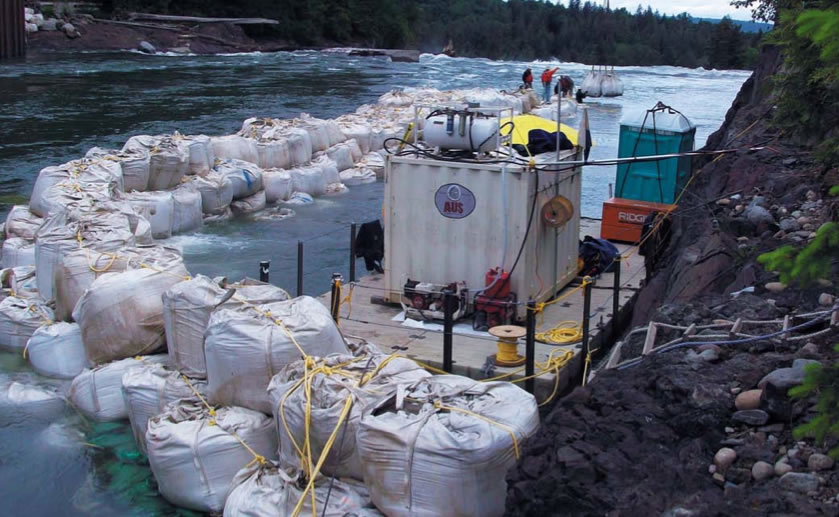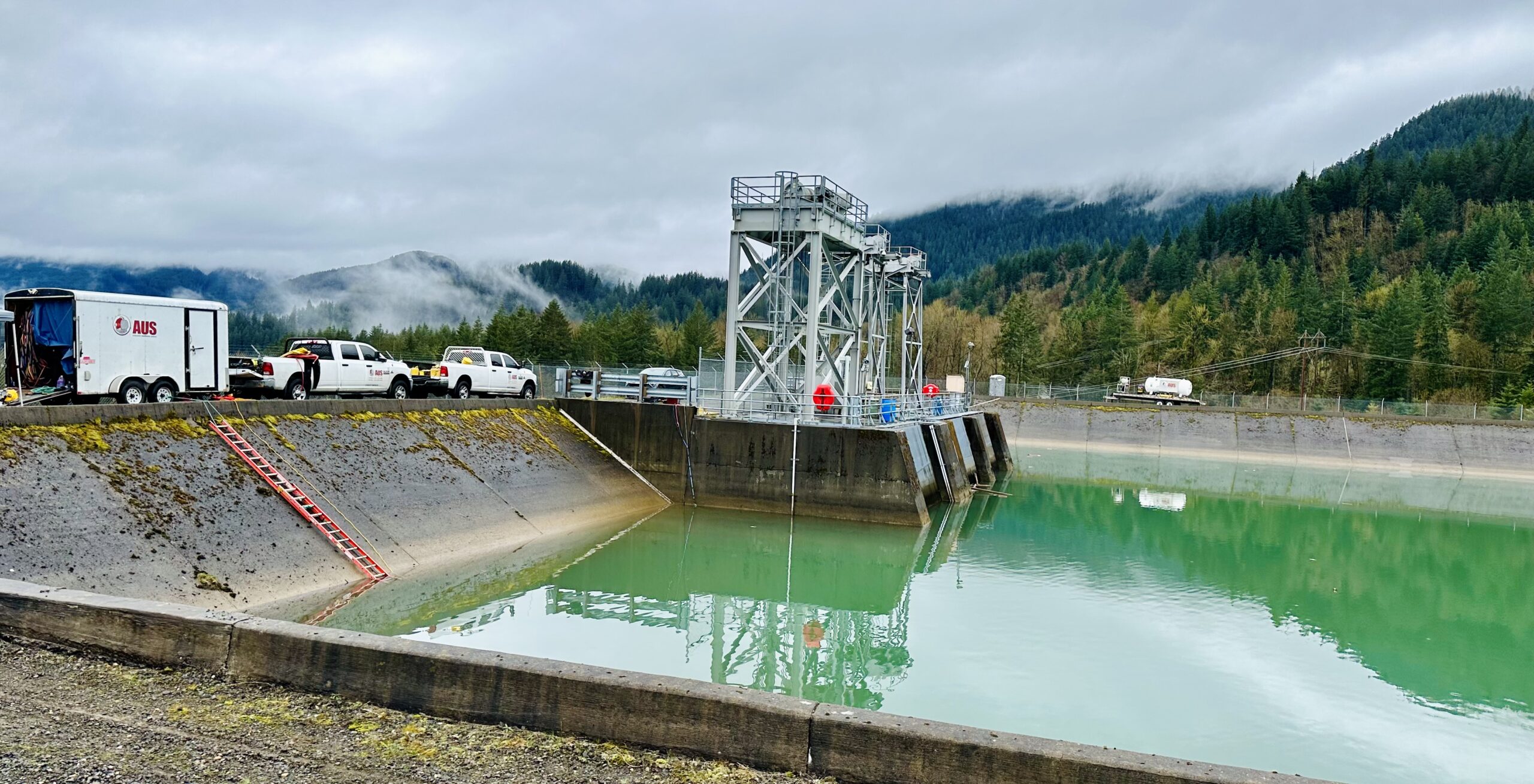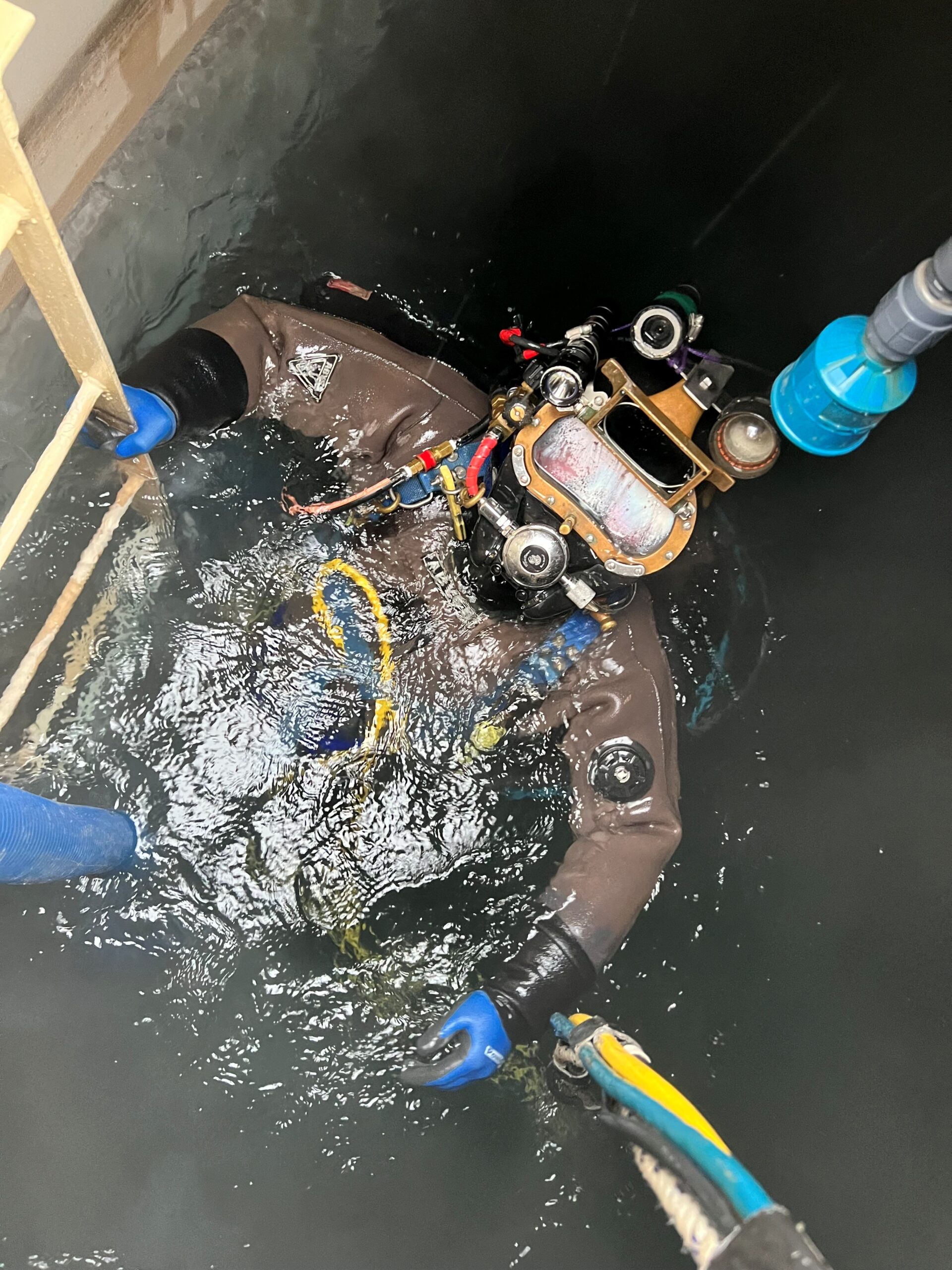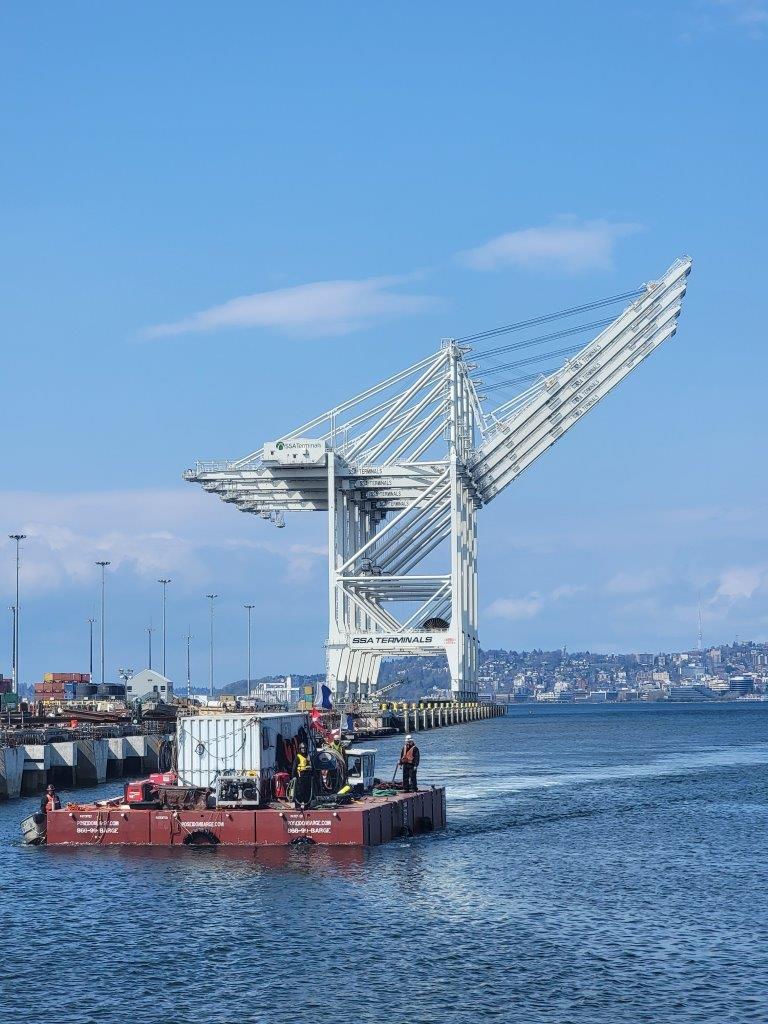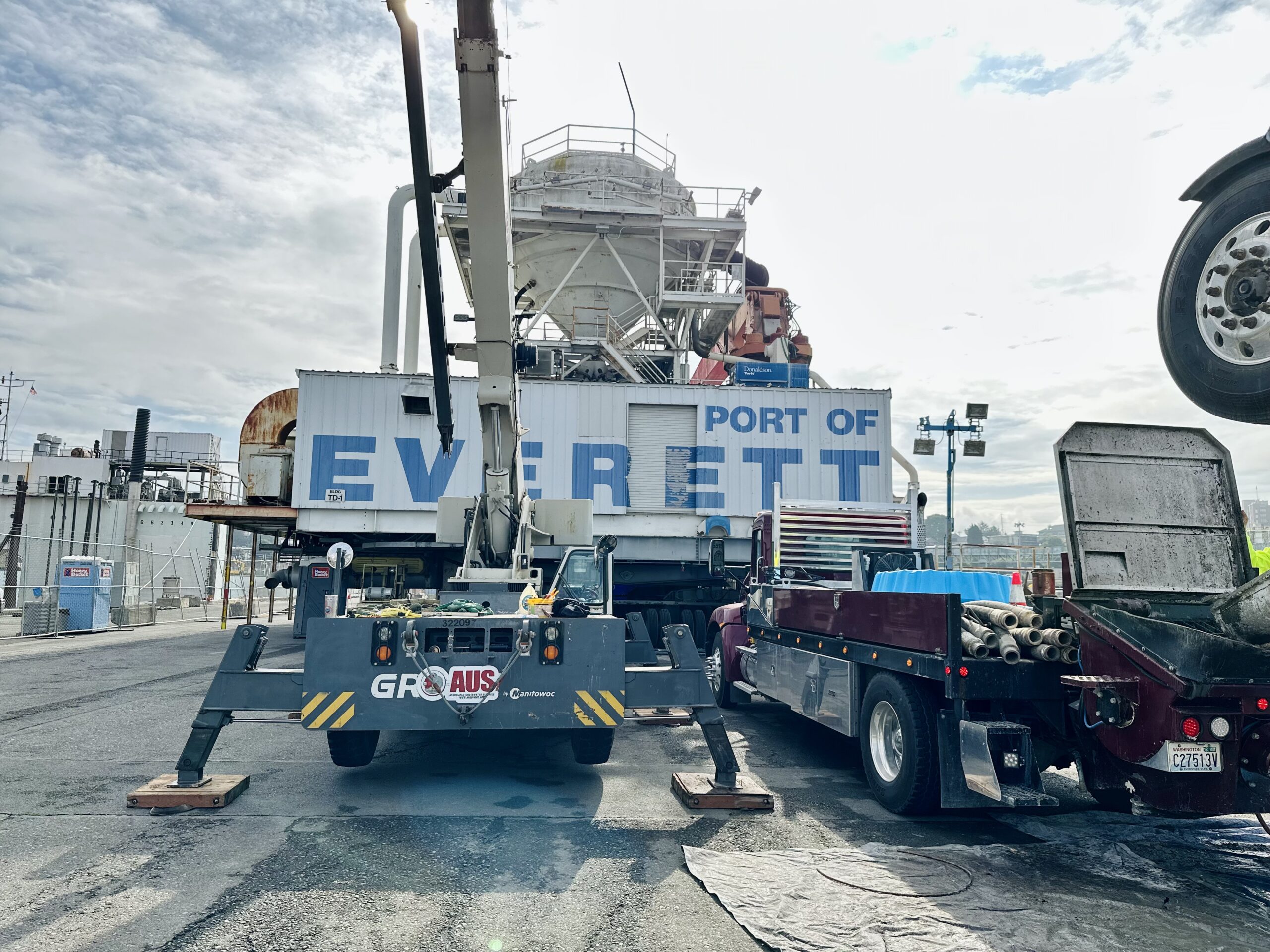


Snoqualmie Falls Hydroelectric Plant Rehabilitation
Snoqualmie Falls Washington:
Associated Underwater Services (AUS) continues to assist to Barnard Construction of Bozeman, Montana with the rehabilitation of the historic and still functioning underground hydroelectric facility at Snoqualmie Falls. Built in the 1890s and located directly underneath the 350 foot waterfall of the Snoqualmie river, the Snoqualmie falls project was one of the first large hydroelectric power sources in the Puget Sound area and contributed significantly to the growth and prosperity of the Puget Sound region in the early 19th Century. The project involves complete replacement of the intake and outlet structures, penstocks and generators.
Arcicle from Underwater Magazine May 2012
Rehabilitation
BY AARON M. LAY

FOR FANS OF THE EARLY ‘90s serial television drama, “Twin Peaks,” Snoqualmie Falls is instantly recognizable from the show’s iconic opening sequences. But for the nearly two million visitors the falls receives every year, it is so much more. Located about 30 miles east of Seattle, Snoqualmie Falls is one of the most popular scenic attractions in the Northwest U.S., and for good reason, too. The 270’ falls and the surrounding 10-acre recreation area, wildlife habitat, kayaking areas, hiking trails and observation platform offer visitors a truly remarkable experience.
However, like “Twin Peaks,” there’s a lot more going on beneath the surface than meets the eye.
Entombed in a bedrock cavity 260’ below ground, Snoqualmie Falls’ hydroelectric powerhouses 1 and 2, built in 1898 and 1910 respectively, make up the world’s first completely underground power plant. This plant has been producing clean power for Puget Sound Energy and its customers for over a century and helped facilitate the early industrialization of the Seattle area at the turn of the century.
But it’s high time for an overhaul.
The impetus behind the plant’s restoration comes down to efficiency. The aging infrastructure of the plant can currently meet the needs of 33,000 households, but subsequent to the rehab, Snoqualmie Falls will add an additional 7,000 homes to that number. And it’s been no small, swift task.
Together with Barnard Construction of Bozeman, Montana, Associated Underwater Services, Inc. (AUS) has been assisting in the rehabilitation of this historic plant since 2010. Dave Cleary, area manager for AUS in the western Washington state region, has been on the job for much of the time – that is, when the river allows him to be. “The Snoqualmie River is one of the major drainage rivers for the Cascade Mountains, and in the wintertime when these big fronts hit Seattle, the river moves way too fast for anybody to work in. So, we wait until summer when it’s far more workable,” he said.

Like most jobs in the inland sector, river current isn’t the only obstacle to overcome. Access to the plant’s intake water tunnels is “very poor,” according to Cleary. In order to allow Barnard’s crews to gain access to the two intake tunnels on each side of the river, temporary cofferdams (made of one-yard capacity Super Sack bags filled with smaller sandbags) must be installed and then removed each season. “Basically, we just built a pyramid. We went six wide and then row by row until we had a large dam made out of one yard bags, then we put a liner on the upstream side of it. Water pressure pushed the liner against the cavities of the bags that existed between the spaces. That sealed all the water off, and it was very dry. Once they put the pumps in and pump the water out, the area dried out really nicely,” Cleary said.
Cleary acknowledges that timing has been an ever-present factor with the project. “All this work has to be done in the summer, and these Super Sack dams are temporary because we have to have every bag out of the water by October 31st because of the fisheries’ laws in this area. So these have to be installed and ripped out every season. Plus, like I said, the river’s currents in the winter are so extreme that they could easily destroy these dams we install. This river fluctuates horrendously.”
The usual array of unique circumstances a crew faces when working an inland sector job can certainly keep things interesting for divers, to say the least. But unlike some inland gigs, depth is not issue at Snoqualmie – it’s all about the current. “We’re only in about ten feet of water, but there’s raging current depending on the time of year – up to 3,000 cubic feet per second – which is not the fastest we’ve worked in, but it’s certainly a safety issue” Cleary admitted. He added, “It’s a real work out just spending three or four hours being in that river setting bags. But obviously, the biggest hazard is our proximity to the falls themselves because you’re only 200 to 100 feet away from the drop off, and if you were to go over it, it would be fatal. So, you’re having to be very careful about where you step, but the divers are always tended 100% of the time, no question.”
AUS’ crew implements a few extra safety provisions to ensure there’s no chance whatsoever of anything going wrong while working in such precarious conditions. “There are a couple of extra safety precautions to make sure the diver stays on the hose no matter what. First, more hose than he needs never gets into the water. And in addition to the tender holding onto the hose and pulling up or letting out slack as necessary, there’s a large man-rated carabineer (from umbilical to harness), and the diver’s hose is usually tied on to a secure point from there. So, even if the tender were to drop his hose or make a mistake, the diver wouldn’t be able to get very far away before being pulled back,” Cleary said.
The crew also employs the Super Sacks themselves as an added and fairly convenient safety measure. Cleary states, “Once a number of bags are in the water and blocking the current enough, we try to work behind them as much as possible. See, these bags have handles on them, and we use carabineers to tie off to the bags as well. Once we get the bags in the river, our operation is pretty efficient.” Safety doesn’t stop with the divers in the water. Each and every member of AUS’ team is secured in some way – even the diving supervisor inside the diver control station wears a secured safety harness. Cleary explains the rig used by the guys working topside on the Super Sack dam, “The tenders wear full harnesses on self retracting lines called ‘yo-yos.’” These ensure that even if a man goes in the river, he’s not going over the falls.

These measures put into place to keep divers and crewmembers safe on the job would not be as ubiquitous in either sector as they are today without ADCI’s Consensus Standards. Cleary expressed his profound approval of the Standards in today’s commercial diving industry, “Well, AUS has been a member of ADCI since at least 2000, and I think (the Consensus Standards) have been a great benefit to the inland diving sector because they have educated both clients and contractors about really important job details like manning levels, the necessary equipment required for each job, and the precautions that need to be taken – especially when working around these dams and hydroelectric plants.”

When asked whether or not the Standards are now relatively well known in most facets of the industry, Cleary replied, “These days, people that hire us expect us to be ADCI members, and oftentimes, it is getting written into job specifications that people must comply with the Standards.”
AUS is about 70% complete with their part in the Snoqualmie Falls project. However, additional construction on the hydroelectric powerhouses as well as major renovation and general improvements to visitor facilities will continue until early 2013.
Puget Sound Energy spokesperson, Roger Thompson, spoke of the unique sense of pride that accompanies such a project, “Snoqualmie Falls is an important part of our legacy as a company. The fact that it’s still operating to this day is kind of a testament to the engineering acumen of those who built (the hydroelectric plant) well over a century ago, so for us to be renovating and upgrading that facility, it’s not only a tremendous honor, it’s allowing us to renew a renewable resource, which will allow us to continue to use this facility to serve our customers for decades to come.”



